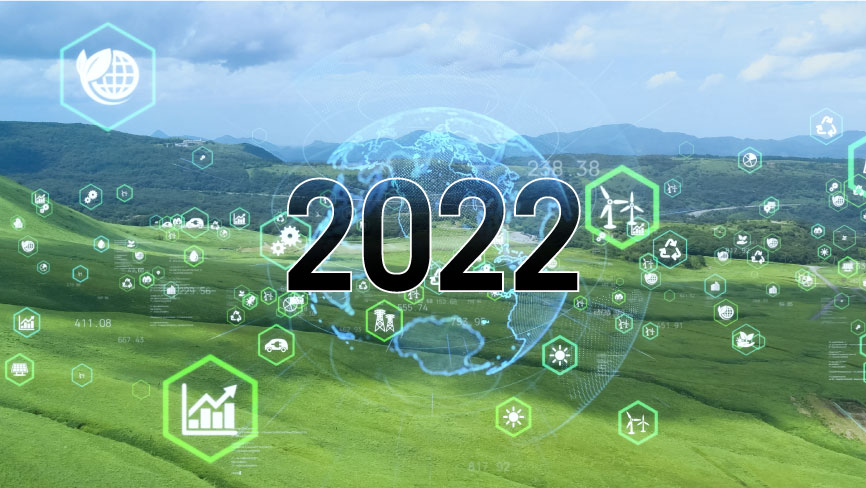The pandemic has triggered a massive surge in digitalization across all industries. At the same time, factors such as climate change and environmental protection are also assuming an increasingly prominent role. Sustainability is the innovation field of the future, and one that, as a critical economic factor, will certainly shape trends for years to come.
Businesses are focusing on digitalization and sustainability
The COVID-19 pandemic not only left its mark on our society, it also transformed global economic processes and has ultimately pushed the digital transformation into the corporate spotlight.
That trend is expected to continue. In this context, sustainability is emerging as a key factor of influence for future developments.
“Carbon-intelligent” clouds and “carbon-aware” cloud services
In the future, companies will consider the responsible use of natural resources as a determining factor in their choice of cloud services. The carbon footprint, which quantifies the amount of greenhouse gases produced, serves as an important indicator. Some of the questions that need to be addressed in this regard include: Does the data center run on renewable energy? How much electricity does that kind of data center consume, based, for example, on the building design or the prevailing climate conditions at the location in question?
With carbon footprint assessments of this kind attracting growing attention, cloud services with “green” data centers are gaining momentum. This has led to the development of so-called carbon-aware cloud services or carbon-intelligent clouds, which are no longer optimized exclusively on the basis of performance, but primarily in terms of energy consumption. Their use of AI methods renders their performance dynamically scalable on the one hand, yet also adaptable in terms of where the most favorable carbon balance can currently be achieved.
No-code/low-code platforms
The need to forge ahead with business process digitalization, including across corporate boundaries, continues to intensify. Added to this is the shortage of skilled IT staff. This has led to wider use of “citizen developers” who handle process or application modeling tasks, reducing the workload for in-house IT departments. This approach hinges on no-code or low-code platforms, which enable users to create digital solutions quickly without extensive programming skills. In the future, development environments of this kind will become even more relevant with respect to the strategic alignment of the IT landscape.
Business and production intelligence services
Coupled with targeted middleware systems and the “Gaia-X” vision, the rising use of specific data spaces is driving the fusion of business intelligence (BI) and production intelligence (PI). By linking numerical machine data, shop floor data, and edge data with content that includes policies, guidelines, and contractual content, companies can create a database for analyzing potential risk clusters in the industrial environment (all part of the catchphrase “big data”).
In the coming years, the increased use of business and production intelligence services will help businesses identify risk clusters and streamline their ability to initiate remedial action at an early stage. The cloud-based solutions (common data environment/CDE) and networked data rooms (common dataspaces) that are required for this will gain traction on the market.
European secure and automated cloud continuum/cloud native
A cloud continuum encompasses a range of functions and services, from public to edge. They are integrated seamlessly into cloud-first networks and supported by corresponding standards. The choice of technologies in the cloud continuum varies, depending on the owner and the location, from enterprise-grade to off-premises. The cloud continuum implies viewing the cloud as a dynamic business model, as opposed to the static resource that many cloud installations currently tend to be.
Cloud-first, 5G, and software-defined networks integrate the continuum, providing cloud access from virtually anywhere and eliminating silos between private, public, hybrid, edge, and multi-clouds. Market research and consulting firm Gartner predicts that the infrastructure will be dynamically scalable and usable by 2025. Then, using infrastructure-as-code practices, users can model virtually any level of infrastructure.
Companies that leverage the continuum by deploying both cloud and cloud-based technologies at scale stand to benefit from lower costs, faster time to market, and revenue growth. The European Commission has recognized the need for an open industry platform to address the technological challenges confronting the data economy in Europe. The groundwork for a European data strategy aimed at digital autonomy from a Green Deal perspective has been laid.




